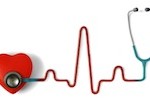Hospital marketing executives and administrators ranked marketing for various service lines as “extremely important” (65.5%) or “very important (24.1%), among respondents to the recent Healthcare Success Strategies (HSS) survey.
Hospital marketing executives and administrators ranked marketing for various service lines as “extremely important” (65.5%) or “very important (24.1%), among respondents to the recent Healthcare Success Strategies (HSS) survey.
Although service lines have generally commanded an important position in the marketing mix, Heart & Vascular Services ranked as the clear leader. It’s likely that the promotional emphasis during coming months will shakeout with the following priority, according to survey takers:
Having High Priority:
- Heart & Vascular Services (65.5%)
- Orthopedics (51.7%)
- Cancer Care (50.0%)
- Women’s Health (46.3%)
Having Low Priority:
- Sleep Disorders (53.5%)
- Geriatrics (48.1%)
- Digestive Disorders (32.1%)
- Children’s Health (29.6%)
Rate your most successful marketing channels for service lines.
When it comes to getting the message out, hospital marketing efforts routinely employ a wide range of communications tools. When asked to rank those that are among the “most successful,” respondents told us:
- Physician Liaison marketing (43.3%)
- Publicity (32.2%)
- Community Events (29.0%)
- Print advertising (19.3%)
- TV advertising (16.1%)
- Organic online ranking via SEO (12.9%)
- Radio advertising (12.9%)
- Internet paid search advertising/remarketing (12.9%)
- Direct mail (9.6%)
- Social Media (6.4%)
- Online directory sites (3.2%)
- Online display advertising on other sites (3.2%)
- Outdoor advertising (0%)
And an alarming stat about tracking…
Regular Healthcare Success followers and readers know the importance of tracking response from external and online advertising efforts. We were a little taken back by the fact that many survey respondents confessed that they didn’t track. When asked “how do you track response,” the answers were:
- Tracking referrals from physicians (40.0%)
- We don’t track (36.6%)
- Website contact form submissions (36.6%)
- Call tracking phone numbers (26.6%)
- Call center reporting (13.3%)

